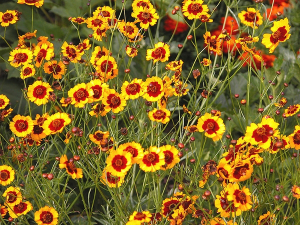As we welcome in summer, our gardens are now in full swing. With the summer weather, we have to keep our gardens watered regularly and be on the outlook for insect and disease problems. Below are gardening tips to help your garden grow through the month of June.
Lawn
- Mowing at the correct height and frequency is one of the most important things you can do to keep your lawn thick and weed-free. Different turf types have different ideal mowing heights. Centipede, Bermuda, and zoysia lawns are best kept at 1″ to 1 1/2″. St. Augustine lawns need to be mowed at 3″ to 4″ high.
- If you use any broadleaf weed killer containing 2-4-D, buy two sprayers and use one for herbicides and the other for insecticides and fertilizers. Label the sprayers with permanent markers so the use is obvious to prevent accidental spraying of herbicide on wanted plants.
- Seeds of centipede, Bermuda, and certain varieties of zoysia can be sown in June but need frequent watering to germinate. Do not allow grass seed to dry out after being sown. St. Augustine grass cannot be established by seed.
Trees, Shrubs and Flowers
- For container gardens in shady locations, try shade-loving plants like begonias, caladiums, ferns, coleus, fuchsia, hellebores, heuchera, and impatiens.Mid- to late June is an excellent time to take softwood cuttings of shrubs to start new plants. Some shrubs propagated in this manner are spirea, boxwood and azalea.Remove dead flowers from bedding plants to get more flowering. Removing the dead flowers or “deadheading” prevents the plants from not flowering and going to seed and before summer is over.
Your Gardening Tips Sponsored By
Fruit, Vegetables and Herbs
- Plant sweet potato slips in June for fall harvest.
- Most vegetables require 1″ of water per week. Avoid wetting the foliage of plants when watering as this increases disease problems. Use soaker hoses or drip tape to apply water at ground level.
- Remember to fertilize your tomatoes as they are growing. Fertilize with 2-3 tablespoons per plant after the plant has started to set fruit and 4-6 weeks thereafter throughout the growing season. Use 8-8-8 and 10-10-10. Keep fertilizer 4-6″ from the plant’s stem to avoid fertilizer burn.
- Squash vine borers may cause a squash plant here and there to wilt, even when no other plants are suffering. Check near the base of the plant for a small hole and a mass of greenish-yellow excrement. Slitting open the stem may reveal the villain: a fat, white caterpillar. It may be possible to save the plant by removing the caterpillar, then covering the injured vine with moist soil to encourage rooting.
Jessica Strickland is an agriculture extension agent, specializing in horticulture for North Carolina Cooperative Extension in Wayne County.

Photo credit: NC State Extension


